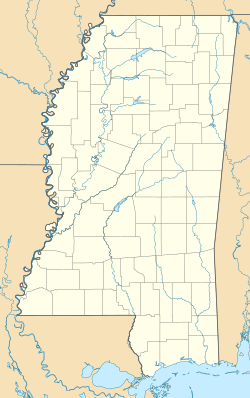Beans Ferry, Mississippi facts for kids
Quick facts for kids
Beans Ferry, Mississippi
|
|
|---|---|
| Country | United States |
| State | Mississippi |
| County | Itawamba |
| Elevation | 272 ft (83 m) |
| Time zone | UTC-6 (Central (CST)) |
| • Summer (DST) | UTC-5 (CDT) |
| GNIS feature ID | 666629 |
Beans Ferry, also called Boatrights Ferry, is a small community in Itawamba County, Mississippi, United States. It's an unincorporated community, meaning it doesn't have its own local government like a city or town. You can find it on Mississippi Highway 25, about 4.5 miles (7.2 km) south of Fulton. The Mississippian Railway also runs through this area.
A Look at Beans Ferry
Beans Ferry is located on the east bank of the Tennessee–Tombigbee Waterway. This waterway used to be the Tombigbee River. The community is named after Robert Beene, who operated a ferry here in the 1800s.
A Bit of History
The Beene family played an important role in the early days of this area. Robert Beene's father, John Beene, was born in 1788. He helped survey the land before Itawamba County was officially formed. John Beene was also a member of the county's first "Board of Police." This board was an elected council that helped govern the county.
The original ferry crossing was a vital link for people and goods. Over time, new ways to cross the water were built. In 1923, a bridge replaced the ferry. Then, in 1948, a newer bridge was built to take its place. This bridge was used until the 1970s. That's when the Tennessee–Tombigbee Waterway was constructed.
Fun at the Waterway
Today, Beans Ferry is home to a large recreation area. It's a great spot for outdoor activities. You'll find a boat launch here, perfect for putting boats into the water. There's also a special viewing area where you can watch boats or enjoy the scenery. The area includes a dock, plenty of parking, and a picnic area. It's a popular place for families and visitors to relax by the water.
Natural Resources
Beans Ferry also has natural resources beneath its surface. There is an active natural gas field in the area. This means that natural gas is being collected from the ground here.



